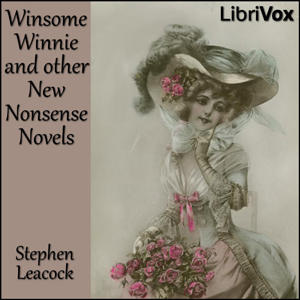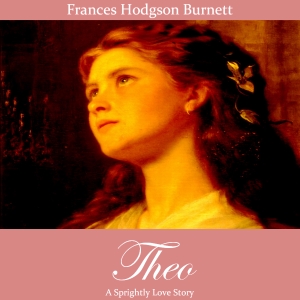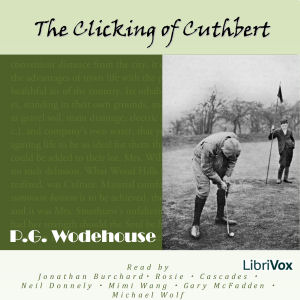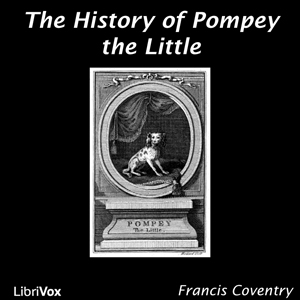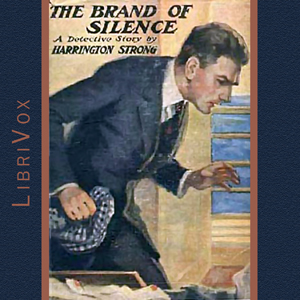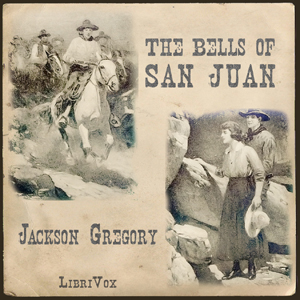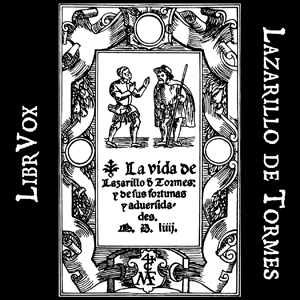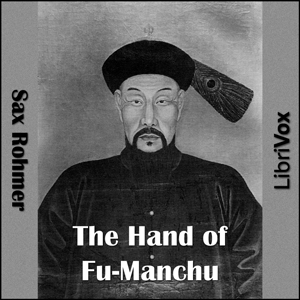
The fathers and children of the novel refers to the growing divide between the two generations of Russians, and the character Yevgeny Bazarov has been referred to as the "first Bolshevik", for his nihilism and rejection of the old order.
Turgenev wrote Fathers and Sons as a response to the growing cultural schism that he saw between liberals of the 1830s/1840s and the growing nihilist movement. Both the nihilists (the "sons") and the 1830s liberals sought Western-based social change in Russia. Additionally, these two modes of thought were contrasted with the conservative Slavophiles, who believed that Russia's path lay in its traditional spirituality.
Fathers and Sons might be regarded as the first wholly modern novel in Russian Literature (Gogol's Dead Souls, another main contender, is sometimes referred to as a poem or epic in prose as in the style of Dante's Divine Comedy). The novel introduces a dual character study, as seen with the gradual breakdown of Bazarov's and Arkady's nihilistic opposition to emotional display, especially in the case of Bazarov's love for Madame Odintsova and Fenichka. This prominent theme of character duality and deep psychological insight would exert an influence on most of the great Russian novels to come, most obviously echoed in the novels of Tolstoy and Dostoevsky.
The novel is also the first Russian work to gain prominence in the Western world, eventually gaining the approval of well established novelists Gustave Flaubert, Guy de Maupassant, and Henry James, proving that Russian literature owes much to Ivan Turgenev. (Summary from Wikipedia)
28 episodes
This is volume 3 of 3. -- Originally published as a penny dreadful from 1845 until 1847, when it first appeared in book form, Varney the Vampyre is a forerunner to vampire stories such as Dracula, which it heavily influenced.Flora Bannersworth is attacked in her own room in the middle of the night, and although her attacker is seemingly shot dead, the body is nowhere to be found. The discovery of two small bite marks on Flora's neck leads Mr Marchdale, an old friend of the family, to the conclusion that she was bitten by a vampire. While Flora recovers, her brother Henry and Mr Marchdale begin their hunt for the vampire. Their suspicions soon fall on the mysterious Sir Francis Varney, who has just bought an old abbey near Bannersworth Hall, and who bears an uncanny resemblance to Marmaduke Bannersworth, a long-dead ancestor of the family. (Summary by Annika Feilbach)
106 episodes
The Lady of the Camellias (French: La Dame aux camélias) is a novel by Alexandre Dumas, fils, first published in 1848, that was subsequently adapted for the stage. The Lady of the Camellias premiered at the Theatre de Vaudeville in Paris, France on February 2, 1852. An instant success, Giuseppe Verdi immediately set about to put the story to music. His work became the 1853 opera La Traviata with the female protagonist "Marguerite Gautier" renamed "Violetta Valéry".
In the English-speaking world, The Lady of the Camellias became known as Camille and sixteen versions have been performed at Broadway theatres alone. The "lady of the camellias" is Marguerite Gautier, who is based on Marie Duplessis, the real life lover of author Dumas, fils. (Summary from Wikipedia)
27 episodes

Dès 1828 Hugo avait conçu Note Dame de Paris et se rend plusieurs fois à la cathédrale. Il ressuscite le Paris d'autrefois avec sa cathédrale. Notre-Dame de Paris retrace la destinée tragique au Moyen Âge d'une jeune bohémienne, Esméralda, victime du désir qu'elle inspire à trois hommes. Convoitée par l'archidiacre Frollo, elle est enlevée sur son ordre par le sonneur de cloches difforme de Notre-Dame, Quasimodo, puis est sauvée par le beau capitaine Phoebus dont elle s'éprend. Mais Frollo, jaloux, poignarde Phoebus, et n'intervient pas lorsque Esméralda est accusée de ce meurtre. Elle est emprisonnée, puis délivrée, cette fois, par Quasimodo, épris d'elle, qui l'entraîne au sein de l'inviolable cathédrale. Les truands de la cour des Miracles, inquiets de sa disparition, assaillent l'édifice, et livrent, sans s'en douter, Esméralda à son pire ennemi, Frollo. Arrêtée, la jeune fille sera pendue sous l'oeil cynique de ce dernier. Quasimodo, enfin édifié sur son «bienfaiteur» Frollo, le précipite du haut des tours de Notre-Dame, et se laisse ensuite mourir dans les bras d'Esméralda dans le charnier où elle repose. ( adapté de http://romantis.free.fr/Victor hugo/html/notdadep.html)
66 episodes
Ralph Rover is a traveler at heart, and has always dreamed of shipping out to the South Seas islands. He finally convinces his aging parents to let him go and find his way in the world. But the islands that Ralph finds are not as idyllic as in his dreams. Shipwrecked on a large, uninhabited island, Ralph and his fellow survivors, Jim and Peterkin, discover a world of hostile natives and villainous pirates. Danger, high adventure, and wonders of the sea greet them at every turn. When all seems lost, they find help from an unexpected source. (Summary by Tom Weiss)
35 episodes
Ramona, a novel written by Helen Hunt Jackson (1884), is the story of a part-Scottish and part-Native American orphan girl growing up and getting married in Southern California, suffering racial discrimination and hardship. Originally serialized in the Christian Union on a weekly basis, the novel became immensely popular. Overall, it has had more than 300 printings, been made into four film versions, and has been performed as an outdoor play annually since 1923. The impact the novel had on the culture and image of Southern California was enormous. Its romanticization of Mexican colonial life gave the region a unique cultural identity and its publication coincided with the arrival of railroad lines to the region, bringing in countless tourists who wanted to see the locations in the novel. (Summary from Wikipedia)
33 episodes
The story centers on Gabrielle Hewish, only and lonely child of Sir Jocelyn Hewish, a loveable lush and owner of the peaceful Roscarna estate nestled in the Irish countryside. In due course, young Gabrielle falls in love
with a Navy man whose untimely demise sends her into a depression, and the consequences of which alter her future, culminating in a fascinating and quite unpredictable relationship with Mrs. Payne and her troubled son Arthur. A story of understanding in it's finest sense and aptly titled, The Tragic Bride is both interesting as a story and telling as a character study. (Summary by Roger Melin)
22 episodes

A few years before the great Civil War, a young English woman and her father, having left the security of their wagon train, are lost in the unforgiving Californian desert, looking in vain for the landmark that marks the short-cut across those last western mountains which would lead them to the home of an old friend. George Castlewood gives all the water and rations he has to his daughter, Erema, and dies just a short distance from help. Rescued by kind Sampson “Uncle Sam” Gundry, the family friend they had been seeking, Erema lives for a time at his saw mill. One day, one Mr. Goad, a bounty-hunter from England, arrives at the mill, offering $10,000 for proof of Lord Castlewood’s death and custody of his young daughter. Lord Castlewood had been accused of the crime of patricide 15 years earlier, escaped from jail and been on the lam ever since. Erema, believing her father’s innocence and determined to clear his good name, returns to England to discover the long-lost secrets of her family and the cloudy circumstances of the murder of her grandfather.
Told by Erema herself, this is a grand story of mystery and the coming of age of an independent and courageous woman. Set in Victorian England and the throes of the Civil War, the story is replete with twists and turns of plot in every chapter.(Summary by Linda Dodge)
58 episodes
'The Beast in the Jungle' is a 1903 novella by Henry James, first published as part of the collection, The Better Sort. Almost universally considered one of James' finest short narratives, this story treats appropriately universal themes: loneliness, fate, love and death. The parable of John Marcher and his peculiar destiny has spoken to many readers who have speculated on the worth and meaning of human life.(Summary by Wikipedia)
6 episodes
A single woman from a family that is well-off, buys a house at a place that is looked down upon and disapproved by her family and friends alike. Her reason - she wants to live the life of and know people like that. (This book's got one of the cutest romantic endings I've ever read). What is surprising is this book is in the PD - there are quite a few modern expressions and comparatively less quaint, out-of-fashion expressions. (Summary by Neeru Iyer)
30 episodes
The story begins in 1846, at Combe-Raven in West Somersetshire, the country residence of the happy Vanstone family. When Andrew Vanstone is killed suddenly in an accident and his wife follows shortly thereafter, it is revealed that they were not married at the time of their daughters' births, making their daughters "Nobody's Children" in the eyes of English law and robbing them of their inheritance. Andrew Vanstone's elder brother Michael gleefully takes possession of his brother's fortune, leaving his nieces to make their own way in the world. Norah, the elder sister, accepts her misfortune gracefully, but the headstrong Magdalen is determined to have her revenge. Using her dramatic talent and assisted by wily swindler Captain Wragge, Magdalen plots to regain her rightful inheritance. (Summary adapted from Wikipedia)
59 episodes
The Europeans: A sketch is a short novel by Henry James, published in 1878. It is essentially a comedy contrasting the behaviour and attitudes of two visitors from Europe with those of their relatives living in the 'new' world of New England. The novel first appeared as a serial in The Atlantic Monthly for July-October, 1878. James made numerous minor revisions for the first book publication. (Summary by Wikipedia)
12 episodes
Wilhelm Meisters Wanderjahre oder die Entsagenden von Johann Wolfgang von Goethe (1749 - 1832)
Wilhelm Meisters Wanderjahre oder die Entsagenden ist ein Roman von Johann Wolfgang von Goethe. Er gilt als die persönlichste aller Goetheschen Dichtungen. 1821 erschien die erste Fassung, 1829 die vollständige. Ihr fehlen die vorangestellten Gedichte des Fragments von 1821.
(Zusammenfassung von Wikipedia)
68 episodes
L'intrigue se déroule sous la coupole de l'Académie française. À la suite de la mort de Mgr d'Abbeville, chaque nouveau candidat à l'immortalité qui est désigné pour occuper son fauteuil, meurt lors du discours d'hommage à son prédécesseur. Hippolyte Patard, secrétaire perpétuel commence à désespérer, personne ne voulant être le successeur de Mgr d'Abbeville, craignant une malédiction lancée par un mage, dont on n'aurait pas voulu comme académicien. C'est alors qu'arrive Gaspard Lalouette, simple antiquaire et marchand.(Wikipedia)
19 episodes
Eight silly stories by Canadian humourist Stephen Leacock. (Summary by Tricia G)
8 episodes
"And so," the story writers used to say, "they lived happily ever after."Um-m-m—maybe. After the glamour had worn off, and the glass slippers were worn out, did the Prince never find Cinderella's manner redolent of the kitchen hearth; and was it never necessary that he remind her to be more careful of her finger-nails and grammar? After Puss in Boots had won wealth and a wife for his young master did not that gentleman often fume with chagrin because the neighbors, perhaps, refused to call on the lady of the former poor miller's son? It is a great risk to take with one's book-children. These stories make no such promises. They stop just short of the phrase of the old story writers, and end truthfully, thus: And so they lived. E. F. (Summary from the Foreword to "Buttered Side Down")
13 episodes

Die Serapionsbrüder nannte E.T.A. Hoffmann zusammenfassend eine Sammlung seiner zwischen 1819-1821 entstandenen Novellen. In einer fiktiven Rahmenhandlung beschreibt er die Treffen einiger Freunde am Tag des Heiligen Serapion. Bei diesen Treffen erzählen die künstlerisch interessierten Freunde einander Geschichten (die Novellen Hoffmanns) und beurteilen diese gegenseitig.
Der Begriff des serapiontischen Prinzips leitet sich von diesem Werk ab. Gemeint ist damit eine bestimmte Art zu dichten, bei der das Erzählte vorher von dem Dichter 'geschaut' werden sollte. Sie darf also nicht einfach nur drauflos fabulieren, sondern die gedachte Möglichkeit des Erdichteten ist absolute Bedingung. Der Dichter wird dabei als Seher, als Künder verborgener Zusammenhänge zweier Welten, aufgefasst. Er bewegt sich zwischen Wachen und Träumen und vermittelt zwischen Wahn und Wirklichkeit, Geist und Seele, Menschlichem und Unmenschlichem.
(Zusammenfassung von Wikipedia)
Diese Auswahl enthält "Die Serapionsbrüder", "Der Einsiedler Serapion", "Serapion und das serapiontische Prinzip", "Eine Spukgeschichte", "Vampirismus" und "Die Bergwerke zu Falun".
8 episodes
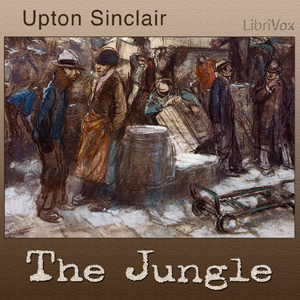
It is the end of the 19th century. Like thousands of others, the Rudkus family has emigrated from Lithuania to America in search of a better life. As they settle into the Packingtown neighborhood of Chicago, they find their dreams are unlikely to be realized. In fact, just the opposite is quite likely to occur. Jurgis, the main character of the novel, has brought his father Antanas, his fiancée Ona, her stepmother Teta Elzbieta, Teta Elzbieta's brother Jonas and her six children, and Ona's cousin Marija Berczynskas along. The family, naïve to the ways of Chicago, quickly falls prey to con men and makes a series of bad decisions that lead them into wretched poverty and terrible living conditions. All are forced to find jobs in dismal working conditions for their very survival. Jurgis, broken and discouraged, eventually finds solace in the American Socialist movement.
This novel was written during a period in American history when “Trusts” were formed by multiple corporations to establish monopolies that stifled competition and fixed prices. Unthinkable working conditions and unfair business practices were the norm. The Jungle’s author, Upton Sinclair, was an ardent Socialist of the time. Sinclair was commissioned by the “Appeal To Reason”, a Socialist journal of the period, to write a fictional expose on the working conditions of the immigrant laborers in the meat packing industry in Chicago. Going undercover, Sinclair spent seven weeks inside the meatpacking plants gathering details for his novel.
The Reader wishes to gratefully acknowledge the assistance, and patience, of Professor Giedrius Subacius (University of Illinois) and the folks at Lituanus for their invaluable support as I struggled with Lithuanian pronunciations. Truly, this audio book would have been far more difficult, and far less authentic, without their help.
And now, feel free to wander into The Jungle…….
(Summary by Tom Weiss)
31 episodes
The author Thomas Archer lived 1830 – 1893; he wrote several juvenile stories, and this book: Miss Grantley’s Girls – And the Stories She Told Them, was published in 1886. It is a book in 7 chapters. Miss Grantley is a teacher and works as a governess, and she after some coaxing tells somewhat romantic stories to "her" girls. In the first chapter it says: "There was nothing romantic in Miss Grantley's appearance, and yet she was the sort of person that you could not help looking at again and again if you once saw her. . . We found out too that she could tell stories of her own; and now and then we used to persuade her to 'spin a yarn,' as Bella Dornton, whose father had been a naval officer, used to say. . . I don't suppose that any of us will ever forget Miss Grantley's pretty parlour." So join the girls in the parlour and listen when Miss Grantley tells her stories. (Summary by Lars Rolander)
8 episodes
“Doc” E.E. Smith pretty much invented the space opera genre, and Triplanetary is a good and well-known example. Physics, time, and politics never stand in the way of a plot that gallops ahead without letup.
Having earned a PhD in chemical engineering, it’s understandable that the heroes of Smith’s story are all scientists. He didn’t want to be constrained by the limits of known science, however, so in his hands the electromagnetic spectrum becomes a raw material to be molded into ever-more amazing and lethal forms, and the speed of light is no bar to traveling through the interstellar void.
Come enjoy this story of yesteryear, set in tomorrow, where real women ignite love at a glance, real men achieve in days what governments manage in decades, and aliens are an ever-present threat to Life-As-We-Know-It! (Summary by Mark F. Smith)
13 episodes
It's described as "A SPRIGHTLY LOVE STORY" and it is written by F. H. Burnett, "one of the most charming among American writers!" (Summary by Project Gutenberg and Elli)
13 episodes
Meet Molly: a quirky, spirited twenty-five-year old, widowed for 6 years, living in picturesque Hillsboro with her aunt amidst gossipy neighbors, on a strict diet, and in serious boy trouble. There's Arthur, her childhood sweetheart; then, there's the enigmatic, charming Judge Wade; and of course, there's her cousin Tom; and then, her infuriating neighbor, John Moore... But who will melt her heart?It is Arthur's return, and his seemingly simple request of wanting to see her in the same blue dress she wore when he left, that throws everything into turmoil...Sometimes, one can only find some solace in one's garden.Narrated in a refreshingly modern and playful style by none other than Molly herself, this book is the British magazine version; there’s a significantly different American novel version.(Summary by Elli, Julie VW and Stav Nisser)
8 episodes
1. Vorrede zu der Geschichte des Maltheserordens nach Vertot von M. N. bearbeitet. (1792)
2. Herzog von Alba bei einem Frühstück auf dem Schlosse zu Rudolstadt, im Jahr 1547. (1788)
3. Der Spaziergang unter den Linden (1782)
4. Vorrede zu dem ersten Theile der merkwürdigsten Rechtsfälle nach Pitaval. (1792)
5. Eine großmütige Handlung aus der neuesten Geschichte (1782)
6. Ueber Egmont, Trauerspiel von Goethe (1788)
7. Spiel des Schicksals (1789)
9 episodes

Mendele Mocher Sforim (Mendele Book seller, literary name for Shalom Jacob Abramovitsch) (1835 - 1917, b. Kapulye, Belorussia), one of the first modern Jewish writers, wrote in both Hebrew and Yiddish throughout his career. In his work he described with sharp satirical criticism the traditional life in small Jewish towns, as well as tendencies for assimilation of learned Jews at the time. He was regarded as the "grandfather of Yiddish literature" but the Hebraic-Zionist atmosphere in Odessa influenced him, and in 1886 he turned to writing Hebrew fiction. Being a Jew has never been easy, certainly not in the 19th century Eastern Europe. Mendele Mocher Sforim wrote with love, and bitterness, about the harsh conditions of Jewish life at the time. The book tells the story of Hershele who leaves the harsh conditions in Russia for Germany, there to become an educated man of the world, but at the same time remaining a committed Jew. The book was first written in Yiddish (Dos Vintshfingerl) and later translated by the author into Hebrew (Emek Ha-Bakha, the vale of tears). (Summary by Omri Lernau)
62 episodes
Der Verbrecher aus verlorener Ehre – eine wahre Geschichte ist ein Kriminalbericht Friedrich Schillers, der 1786 zunächst unter dem Titel „Verbrechen aus Infamie“ veröffentlicht wurde.
(Zusammenfassung von Wikipedia)
4 episodes
The man was John Cardigan; in that lonely, hostile land he was the first pioneer. This is the tale of Cardigan and Cardigan's son, for in his chosen land the pioneer leader in the gigantic task of hewing a path for civilization was to know the bliss of woman's love and of parenthood, and the sorrow that comes of the loss of a perfect mate; he was to know the tremendous joy of accomplishment and worldly
success after infinite labour; and in the sunset of life he was to know the dull despair of failure and ruin. Because of these things there is a tale to be told, the tale of Cardigan's son, who, when his sire fell in the fray, took up the fight to save his heritage--a tale of life with its love and hate, its battle, victory, defeat, labour, joy, and sorrow, a tale of that unconquerable spirit of youth which spurred Bryce Cardigan to lead a forlorn hope for the sake not of wealth but of an ideal. (Summary from the text)
40 episodes
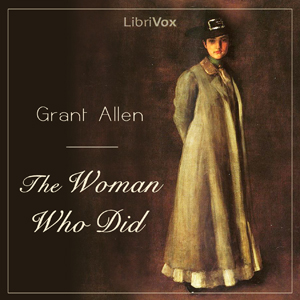
Most times, especially in the time when this book was written (1895), it is just as nature and society would wish: a man and woman "fall in love" and get married. But it is not so for Herminia Barton and Alan Merrick. They do indeed fall in love, but Herminia has a deeply held belief in freedom for women, and she holds immutable views against what she perceives as the slavery of marriage.
Alan unwillingly agrees to her strong wish to remain unmarried and to live together as "close and dear friends". When the birth of their child is imminent, they go to his beloved Italy to avoid the condemnation of English society.
From this point on, many questions are raised: is marriage indeed so important? Is strong will always good? Is it right to go against society? And if it is, when should we stop and consider the effects on other people? What should a child do when she is raised to be what her mother dreams and develops her own dreams in the process? And, finally, how much should parents sacrifice for their children? (Summary by Stav Nisser and Ruth Golding)
24 episodes
Lady Julia, the daughter of the earl of Belmont, and Mr. Henry Mandeville are falling in love. Though Henry is like a family friend, this love is not welcomed because the lady Julia is promised to someone else (or so Henry thinks). When they'll discover their chance of happiness, it is much too late. Summary by Stav Nisser.
30 episodes
"Not once upon a time but just now, in a white house by the side of a road, live three happy children.
Their mother and father gave them very odd names, for two old uncles and one aunt, which pleased the old people very much. Their names are all written in the big family Bible,--Jehosophat Green, Marmaduke Green, and Hepzebiah Green." So begins this collection of bedtime stories for children, one each night for twenty days, involving these three happy children and their playmates.
(Summary by P. Cunningham)
20 episodes
Jane Merrick is a wealthy, elderly, difficult invalid woman who is preparing for her approaching death. In her youth, she inherited her money and estate from her fiancé, Thomas Bradley, who died before their wedding took place. With no children of her own, she calls for her three teenaged nieces to visit her, so she can decide who will inherit her estate. They are Louise Merrick, Elizabeth De Graf, and Patsy Doyle, children of Jane's younger brother and sisters. Each of the three cousins is a different type. (Summary by Wikipedia)
29 episodes
This book tells the story of the American war of Independence from the side of the British. The old flag mentioned in the title is the flag of England. This is a book for young readers, but - as a good book should be - everybody can enjoy it". (Summary by Stav Nisser)
22 episodes
Modeste Mignon, a young provincial woman of romantic temperament, imagines herself to be in love with the famous Parisian poet Melchior de Canalis. However, he is not moved by her attentions. He invites his secretary Ernest de la Brière to "deal with the matter". Ernest answers Modeste's letters in his name and acts as her lover, disguised as Canalis. The scene changes dramatically when Ernest discoveres that Modeste is, in fact, a rich heiress. Will he be able to win her heart despite his lie? (Summary by Wikipedia, revised by Stav Nisser.)
29 episodes
'The Job' is an early work by American novelist Sinclair Lewis. It is considered an early declaration of the rights of working women. The focus is on the main character, Una Golden, who desires to establish herself in a legitimate occupation while balancing the eventual need for marriage. The story takes place in the early 1900-1920's and takes Una from a small Pennsylvania town to New York. Forced to work due to family illness, Una shows a talent for the traditional male bastion of commercial real estate and, while valued by her company, she struggles to achieve the same status of her male coworkers. On a parallel track, her quest for traditional romance and love is important but her unique role as a working woman... makes it tough to find an appropriate suitor. (Summary by Wikipedia)
26 episodes
Join the Oldest Member...whether you like it or not...and be carried on a magic carpet ride through the world of golf, love, and...aunts...as seen through the eyes of the creator of Jeeves and Wooster and Blandings Castle, the inimitable Pelham (Plum) Grenville Wodehouse. (Summary by Jonathan Burchard)
11 episodes

“THE BOOK THAT DORIAN GRAY LOVED AND THAT INSPIRED OSCAR WILDE”. Such is the enticing epigraph of one early translation of Huysmans’ cult novel of 1884, which is also routinely called the Bible of Decadence. Accurate descriptions, both, of this bizarre masterpiece which has reverberated ever since through high and popular culture.“Against Nature” (or in this version “Against The Grain”) explores to the furthest limit the life of the world-rejecting aesthete living a reclusive existence devoted entirely to artificial paradises of his own devising. This is no solemn tract, however: the book’s anti-hero Duc Jean Floressas Des Esseintes spectacularly fails to achieve his life’s work, as all his attempts to create worlds of perverse experience through synaesthesia and interior decoration prove ludicrously unsatisfying and injurious to health. An innocent tortoise also falls casualty to his theories, in the wonderful fifth chapter.This is probably a novel best savoured one chapter at a time, and not only because John Howard’s clunky translation makes indigestible listening. Those who can skip whole chunks without guilt would do well to avoid chapters 4, 7, 12 and 14. Revel, however, in the wonders of 5, 8, 9 and 11. Encounter the jewel-encrusted chelonian, the butch lady acrobat, the nightmarish orchids that cause the hero to exclaim “All is Syphilis”…Alas, this translation lacks a chapter, and two brief incidents are also suppressed on account of their sexual perversity. Enjoy what remains. (Summary by Martin Geeson)
18 episodes
The story ostensibly concerns a young literary critics who greatly admirs the writer Hugh Vereker. A meeting with Vereker, however, shows him that he – and all other critics – have in fact missed the great point of Verreker's work, and the critic (and his editor) thereupon devote themselves to trying to unravel the mystery. James's story, however, almost certainly has an autobiographical side to it, perhaps itself criticizing those critics who couldn't see, or wouldn't see, the figures lost in the carpet of his own writing. (Summary by Nicholas Clifford)
11 episodes
"Pompey, the son of Julio and Phyllis, was born A.D. 1735, at Bologna in Italy, a place famous for lap-dogs and sausages." At an early age he was carried away from the boudoir of his Italian mistress by Hillario, an English gentleman illustrious for his gallantries, who brought him to London.
The rest of the history is really a chain of social episodes, each closed by the incident that Pompey becomes the property of some fresh person. In this way we find ourselves in a dozen successive scenes, each strongly contrasted with the others. It is the art of the author that he knows exactly how much to tell us without wearying our attention, and is able to make the transition to the next scene a plausible one. (Summary by Edmund Gosse in "Gossip in a Library" http://www.gutenberg.org/etext/11628)
34 episodes
"Olalla" was a "shilling shocker" written for the Christmas season in 1885, just before the publication of Stevenson's Dr. Jekyll and Mr. Hyde. The nameless protagonist of this Gothic tale, a wounded soldier, goes to the Spanish countryside to recuperate. He finds himself enthralled by the beautiful Olalla, the daughter of his hostess, whose family conceals a terrible secret. (Summary by Elizabeth Klett)
4 episodes
The novel begins in the 1790s in the coastal town of Monkshaven. Sylvia Robson lives with her parents on a farm, and is loved by her rather dull Quaker cousin Philip. She, however, meets and falls in love with Charlie Kinraid, a sailor on a whaling vessel, and they become engaged, although few people know of the engagement. But Charlie gets press-ganged and has to leave without a word... (Summary from Wikipedia)
46 episodes
(under the pseudonym Olive Pratt Rayner) "There is no more pathetic figure in our world to-day than the common figure of the poor young lady, crushed between classes above and below, and left with scarce a chance of earning her bread with decency." So says Juliet Appleton’s boss, encouraging her to put her story into print. How will this college-educated 23-year-old survive the Darwinian Battle of Life in late Victorian England? She’s fundless in London but armed, by way of adaptive structures, with those two high-tech devices of the day: a bicycle for mobility and a typewriter for utility. (Summary by Grant Hurlock)
22 episodes
Harrington Strong was a pseudonym used by author Johnston McCulley, creator of the character Zorro and many others. The Brand of Silence - A Detective Story finds Sidney Prale returning to New York after ten years during which he sought his fortune. But he finds New York a very changed place, and even more distressing, he finds that his old friends are now turning their backs on him, his old haunts no longer welcome him, and there seems to be a conspiracy against him.Why can't he receive service in hotels, restaurants, and theaters that he once frequented? Who is working against him? And just as importantly, why? And what is the meaning of the notes he receives which remind him of "retribution"? (Summary by Roger Melin)
26 episodes
In the High Valley" is the fifth and last book of the popular "What Katy did" series by Susan Coolidge.
The story starts out with Lionel Young and his sister, Imogen who set out for the picturesque but remote High Valley (America), leaving their hometown Devonshire (England) behind.
Lionel wants to take the share in Geoffrey Templestowe's cattle business.
Imogen, owing to her prejudices against America and the American way of life, finds it hard to adjust to life over there.
Clover Templestowe, now happily married and living in the High Valley, at first finds it very trying to get on with Imogen.
A lot of events ensure in the course of which we meet again with Rose Red, get news from Cousin Helen and of course meet Katy again... until it all finally ends in a lovely double wedding!
(Summary by Elli)
10 episodes
Pope’s Essay on Man, a masterpiece of concise summary in itself, can fairly be summed up as an optimistic enquiry into mankind’s place in the vast Chain of Being.
Each of the poem’s four Epistles takes a different perspective, presenting Man in relation to the universe, as individual, in society and, finally, tracing his prospects for achieving the goal of happiness.
In choosing stately rhyming couplets to explore his theme, Pope sometimes becomes obscure through compressing his language overmuch. By and large, the work is a triumphant exercise in philosophical poetry, communicating its broad and commonplace truths in superbly balanced phrases which remind us that Pope, alas, is one of the most quoted but least read writers in English:
“Hope springs eternal in the human breast: Man never is, but always To be Blest.”
(Summary by Martin Geeson)
5 episodes
This novel, first published in 1890, follows the life of Dick Heldar, a painter. Most of the novel is set in London, but many important events throughout the story occur in Sudan or India. It was made into a 1916 film with Jose Collins and a 1939 film by Paramount starring Ronald Colman.
It is a tale of of a man who loves his work, friends and boats and starts in Dick’s childhood, then takes you through his life – the war in Sudan, friends abroad, life in England, his love for Maisie, the obstacles those closest to him meet when a very independent man fights becoming dependant and finally the life changes Dick faces as his eyes fail him.(summary by Magdalene)
24 episodes
Rod Norton is a lawman in a land where bandits and criminals make their own rules. Risking his life for justice and a future with the woman he loves, mortal danger awaits. For Norton and those in peril, the Bells of San Juan will chime. (Summary by Betty M.)
27 episodes
"Joseph Andrews ... was the first published full-length novel of the English author and magistrate Henry Fielding, and indeed among the first novels in the English language. Published in 1742 and defined by Fielding as a ‘comic romance,’ it is the story of a good-natured footman's adventures on the road home from London with his friend and mentor, the absent-minded parson Abraham Adams." (Summary by Wikipedia)
33 episodes
La vida de Lazarillo de Tormes y de sus fortunas y adversidades (más conocida como Lazarillo de Tormes) es una novela española anónima, escrita en primera persona y en estilo epistolar (como una sola y larga carta), cuya edición conocida más antigua data de 1554. En ella se cuenta de forma autobiográfica la vida de un niño, Lázaro de Tormes, en el siglo XVI, desde su nacimiento y mísera infancia hasta su matrimonio, ya en la edad adulta. Es considerada precursora de la novela picaresca por elementos como el realismo, la narración en primera persona, la estructura itinerante entre varios amos y la ideología moralizante y pesimista. (Resumen de Wikipedia)
5 episodes
The story of seven girls who have banded themselves together for mutual help and cheer under the name of "Nous Autres." They represent, collectively, the professions open to women of no deliberate training, though well educated. They are introduced to the reader at one of their weekly gatherings and then the author proceeds to depict the home and business life of each one individually. (From the 1909 back-of-book advertisement)
Read from the 1914 edition, Methuen & Co. Ltd. pub
20 episodes
This story is of a time beyond the memory of man, before the beginning of history. . .
(Summary from the text)
5 episodes
Further adventures of Nayland Smith and Doctor Petrie as they continue their battles against the evil genius, Dr Fu-Manchu. (summary by Elaine Twiddle)
40 episodes














